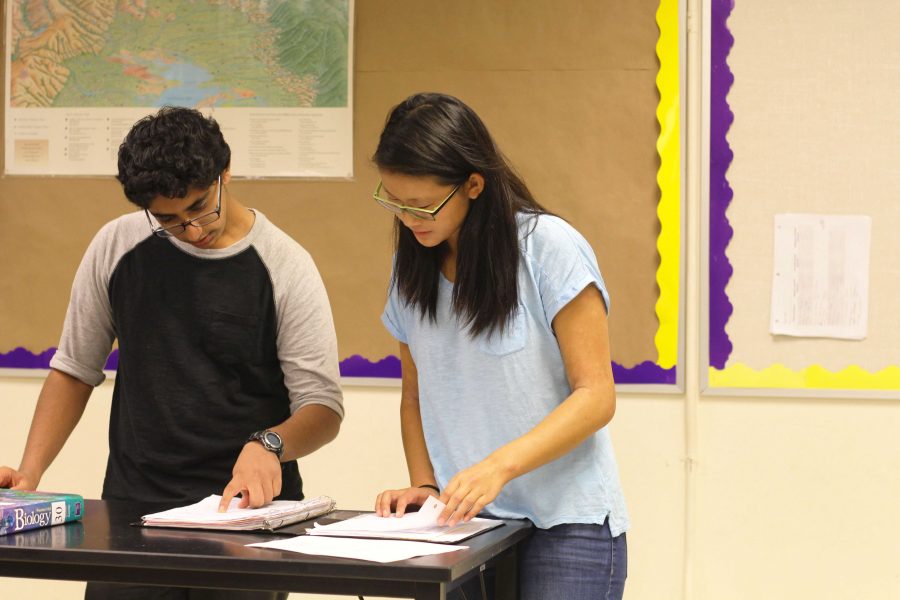Competition. This is the one word we have all come to use to define MVHS one way or another. The competitive environment here has encouraged us to work against our own peers, because we’re all competing for that higher end of the curve, that club officer position, and that very same spot on the top. The sight of students offering each other genuine help and guidance is a sight that has become rarer than it should be. Instead of working against each other though, we should strive to work together, and help each other more, because there are many benefits to be received from working as a whole.
Biology club, peer counseling, study buddies — these are only a few of the many organizations on campus in which students themselves offer to help, tutor or counsel other students in a wide area of subjects. In a constantly changing environment like MVHS, it’s easy for students to fall a step behind others, and after getting off that path, it’s pretty hard to get right back on. Itís something weíve all encountered. We just zone out that one day in class, or have too much work and clubs and tests jammed all into one week so we can barely remember the order of our classes — much less the structure of a carbohydrate the teacher went over in third period biology on Tuesday.
This is why we are provided with the opportunity to receive guidance from other students, who we might feel more comfortable with, because they can empathize more with the five APs, the three clubs, and that one afterschool sport we all try to juggle at once. A study done by the Institute of Education from London University involving 4,000 students from the ages of five to fourteen found that the students who worked together in groups and helped each other, made rapid progress compared to those that didn’t. Student collaboration not only allows students to work more effectively, but also a chance for them to see things from a perspective like their own. When working with peers just like them, students are more open and can relate more, compared to parents or teachers.
Math and Physics teacher Sushma Bana directly experienced the difference between the interactions of students versus that of a student and a teacher. Three years ago, Bana actually took Spanish 1 along with other students. That year, Bana had a free fifth period, so every fifth period, she would go and sit in on Spanish teacher Joyce Fortuneís fifth period Spanish 1 class. She took the course for the entire year, doing everything a Spanish 1 student was supposed to do, from the nerve wrecking orals to the group projects to the dreaded finals. Through this experience, Bana realized that there was a lot more to students, their interactions, their stress, and their complaints than what she had only seen as a teacher.
“I could see, when I was part of a group [in Spanish], that the kids were more open with me and they called me by my first name. There are presentations, there are oral quizzes, and [during those quizzes] I could feel my heart beating so fast,” Bana said. “It’s just as teachers we lose perspective that these kids have seven classes, and they go through test taking in all seven of those classes, with seven different styles of teaching. So going through that experience really made me more sensitive to the needs of students and really affected my practices.”
This is essentially what biology club, peer counseling and all related clubs are for — to understand and learn from others who are very much like them. They’re here so students can share their experiences with each other and then learn from those experiences. It’s more than just a club or a 45 minute tutoring session on photosynthesis. It’s about understanding, empathizing and sharing. It’s about connecting.








